Keep Exploring
New Seed Varieties 2025: Something for Everyone

New Seed Varieties for 2025
What are the new varieties in the 2025 SSE catalog? Read on to find out!
Seed Savers Exchange marks 50 years in 2025, and there’s a lot to celebrate—including 16 new seed varieties in our special-edition catalog (seven exclusively from the SSE collection). From gorgeous flowers to delicious and productive vegetables, there is truly something for everyone among these introductions.
These varieties—along with more than 600 other open-pollinated, non-GMO varieties—are available online at shop.seedsavers.org.
Shop all new and noteworthy seeds.
HEIRLOOM VARIETIES FROM THE SSE COLLECTION
A highly productive squash that delivers great taste whether used as a summer or winter variety, a deliciously sweet plum tomato that truly checks all the boxes, and a beautiful crisphead lettuce that had been lovingly stewarded by three generations of one family prior to its donation to Seed Savers Exchange. These are just three of the seven “From the Collection” varieties that SSE is proud to introduce in 2025. We hope that you are as excited to try them as we are to offer them
‘Brown Goldring’ Lettuce
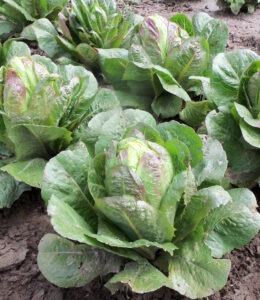
The Royal Horticultural Society presented this midseason-maturing romaine heading lettuce with the prestigious award of merit in 1923. Red-green leaves are thick, tender, and sweet, striking all the right notes in the garden and on the salad plate.
Donated to Seed Savers Exchange in the early 1980s by member and Exchange lister Stan Heymann, this variety was likely developed by Thomas Goldring and Sons, a pre-World War I company of seedsmen, fruiterers, and florists based in Sussex, England. 50-60 days. Organic.
‘Grazer Krauthaeupte’ Lettuce
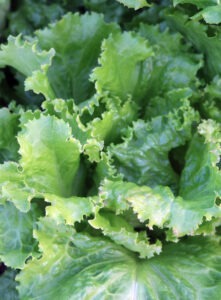
This Austrian crisphead variety produces tender, crisp, and exceptionally flavorful leaves on well-developed, uniform heads. Yellow-green leaves are light-purple along the head-forming leaf margins, while the outer leaves are highly toothed and blistered. Bolt-resistant plants reach 6-7″ tall and 11-14″ in diameter.
Seed Savers Exchange acquired this variety from the late Mary Schultz, an SSE member and Exchange lister from Washington. 50-60 days.
‘Kovacs Family Heirloom’ Lettuce
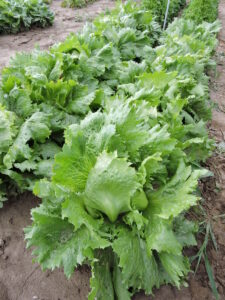
This large, beautiful crisphead lettuce is truly versatile, delivering very crisp, juicy, and tasty leaves that excel in everything from salads to (yes!) soups. Plants reach 8-10″ tall and 16-18″ wide and produce firm, uniform heads and green leaves with highly toothed margins.
Lettuce lovers can thank the Kovacs family for this remarkable variety, which has been stewarded by the family for at least 120 years and is the main ingredient in a soup recipe passed down through the generations. 50-60 days.
‘Krauthaeuptel Streits’ Lettuce

Looking for a lettuce with top-notch texture and a sweet flavor with not a hint of bitterness? Then this Austrian crisphead is for you! Heads vary from slight to well developed and have light-green, obovate (broader at the top) leaves with a highly undulating, toothed-leaf margin.
Seed Savers Exchange acquired this mid-season-maturing variety from the late Mary Schultz, an SSE member and Exchange lister from Washington. 50-60 days. Organic.
‘Verte Mar’ Lettuce
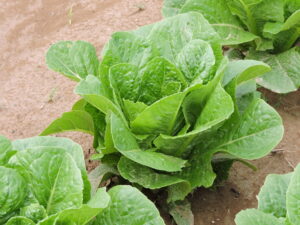
This romaine lettuce boasts big, sweet, crisp, and slightly crinkled leaves that are sure to please any palate. A French variety, ‘Verte Mar’ forms a solid, elliptic head on slow-bolting plants. This variety stood out in the 2015 Seed Savers Exchange lettuce evaluation for its sweetness and crispness.
SSE acquired it from the late Mary Schultz, an SSE member and Exchange lister from Washington. 50-60 days. Organic.
‘Zucchetta Rampicante’ Squash
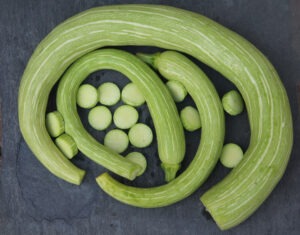
This marvelous Italian heirloom delivers both in the garden and on the plate! Highly productive plants bear plenty of long, slender, curved fruits. Squash measure 2-3″ in diameter, and weigh from 5-8 pounds at maturity.
‘Zucchetta Rampicante’ excels as a summer squash—it’s tender, mild, and sweet—but has also long been used in Italy as a winter squash in pies, ravioli, and gnocchi.
Seed Savers Exchange received this variety in the early 2000s from Jaime Poris, an Exchange lister. 70 days. Organic.
‘Willie’s Garden’ Tomato
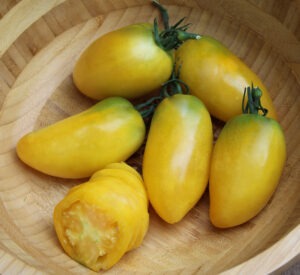
What makes this productive plum tomato so unique? It has very little acid, allowing its natural sweetness to elevate the overall flavor of salads, sauces, and other dishes.
Seed Savers Exchange received this midseason-maturing tomato in 2016 from Dr. Jeff McCormack, founder of Southern Exposure Seed Exchange. He noted that the tomatoes hail from Coeburn, Virginia; have been passed down for generations; and are likely named for Willie Yates, whose grandfather also grew the variety.
Indeterminate. 65 days from transplant. Organic.
MORE NEW VARIETIES FOR 2025
Seed Savers Exchange is also thrilled to offer the following nine open-pollinated varieties for the first time.
‘Giant Prague’ Celeriac
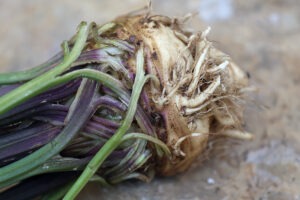
If you’ve not yet tried this versatile, hardy, and easy-to-grow root vegetable, you’re missing out! ‘Giant Prague’ delivers light celery flavor matched with a slight peppery taste and the classic sweetness of many root vegetables.
Edible raw or cooked, celeriac excels in soups and casseroles and can be stored for up to eight months in a cool, dry place. 110-120 days.
‘Linore’ Flax Flower
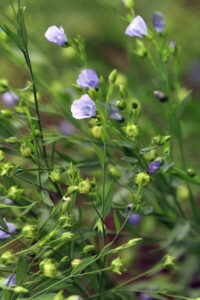
Flax is the flower you’ve been missing in your garden border! ‘Linore’ reliably produces beautiful, sky-blue, pollinator-attracting flowers and delicate, airy foliage on stems that average about 2.5′ tall.
Developed in 1962 at the University of Oregon, this cold-tolerant variety can also be grown for linseed oil and fiber production. Annual. 100-110 days.
‘Luffa’ Gourd

Admire its beauty…enjoy its flavor…use its inner sponge. Prolific, vigorous vining annuals produce yellow blooms that attract pollinators and set fruit that, when young, can be sautéed, pickled, or even eaten raw.
By late summer, gourds turn a deep green and start to wrinkle, signaling it’s time to harvest and peel them for their dense, tan inner sponge.
After seeds are removed and the gourd is cured, luffa sponges can be used for everything from scrubbing your back to washing dishes and even cleaning the barbecue grill. Gourds grow 12-18″ in length, 4-7″ in diameter. 100-plus days.
‘Chater’s Double Mix’ Hollyhock Flower

Prepare to be wowed! This classic cottage-garden plant produces plentiful, showy, huge double blooms in a rainbow of colors from summer into fall. Sturdy plants reach up to 7′ tall and look particularly impressive when grown against a fence or wall.
This old-fashioned favorite will draw an array of birds, butterflies, and other pollinators to your garden. It also makes an excellent cut flower. Biennial.
‘Fig’ Hollyhock Flower
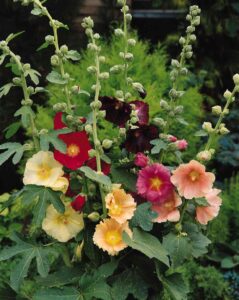
Gorgeous, long-lasting blooms and distinctive, rust-resistant, fig-shaped leaves define this lesser-known but just as majestic hollyhock. Robust plants grow 4-6′ tall and produce multiple stems from each base; stems stay flush with stately single blooms in a palette of cream, gold, rose pink, copper, and purple from midsummer until frost.
These hollyhocks impress in the garden as tall border plants; their long stems and lasting blooms make them an excellent cut-flower choice. Perennial.
‘White Russian’ Kale
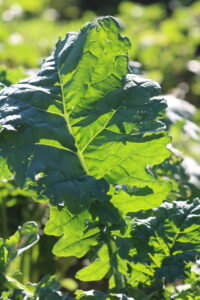
Sweet, tender, blue-green leaves tolerate frost well and become even sweeter in cold weather. Plants reach 24-30″ tall and develop plentiful, moderately serrated, white-ribbed leaves that pair well with the equally flavorful ‘Red Russian’ kale.
Frank Morton at Wild Garden Seed developed this variety in 1994; it is protected by the Open Source Seed Initiative. 50 days. Organic.
‘Carolina Broadleaf’ Mustard
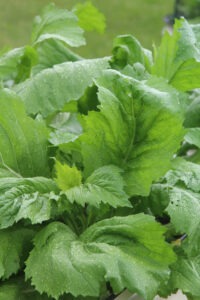
This variety develops beautiful, large, wrinkled, green leaves with a classic Southern mustard green flavor and a delightfully spicy kick. Plants reach 16-24″ tall and produce plentiful leaves that can be picked when small for making salads, or when larger for cooking.
Introduced in 2017 by Southern Exposure Seed Exchange, ‘Carolina Broadleaf ’ is an adaptation of the long-popular ‘Florida Broadleaf ’ mustard that offers resistance to bacterial blight. 42 days.
‘Palla Rossa’ Radicchio
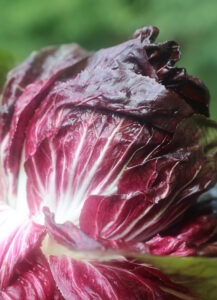
Distinctively spicy and tangy, ‘Palla Rossa’ radicchio makes a delicious addition to any mixed-greens salad. It loses bitterness (and actually becomes sweeter) when cooked; Italians typically grill it with a bit of olive oil, lemon, salt, and pepper.
Gorgeous plants develop striking red heads that reach up to 4″ in diameter and green outer leaves; the outer leaves are most typically eaten when young as baby greens. 80-85 days.
‘Big Max Pumpkin’ Squash
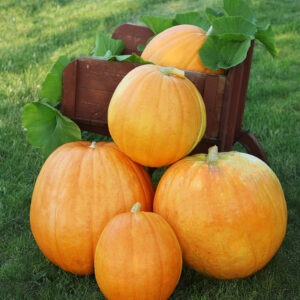
These huge, easy-to-grow pumpkins can tip the scales at well over 100 pounds while retaining a uniform, round shape ideal for carving spectacular jack-o’-lanterns.
Very thick, yellow-orange flesh makes delicious pumpkin pies and purée, unlike most other varieties of large pumpkins that are less suited for culinary use. The flesh has been described as good for canning and freezing. less suited for culinary use; and, yes, there’s plenty of it for canning or freezing, too! 110 days.